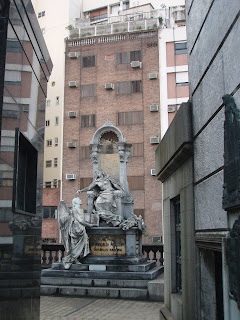
After visiting Robben Island, I wonder if it would be better to be colorblind. Please don't think this is an injustice or a mockery of those who are colorblind. I am merely looking at racial lines that are crossed way too often, presently, recently and throughout history.
 I pose the question: would all this be going on if everyone were colorblind? Would discrimination occur in another form? I would recommend reading The Giver because it touches upon this topic.
I pose the question: would all this be going on if everyone were colorblind? Would discrimination occur in another form? I would recommend reading The Giver because it touches upon this topic.This is not what I want my focus to be rather just some concepts to think about. Robben Island was another experience that tore my heart apart. Robben Island is 12 kilometers in circumference and about 2km by 4 km. There is a primary school still used with the original medical facility and two different churches in use. It was first used by the Dutch as a pantry for extra food.

Eventually, it was used for those who were banished for crimes or illnesses. The Brits removed prisoners from the island, but eventually, after Governor John Murray died, prisoners were moved back to the island in 1807. Leprosy became more prevalent on the mainland and people thought it was contagious so those with leprosy and any mental illness were removed from the mainland and sent to the island. This was in 1846.

During the 1920s the cost to maintain the facilities for the ill was becoming too much and in 1931 the patients were moved back to the mainland. At this point, there were also advances in medicine that changed the original ideas about the illnesses being treated on Robben Island. During this time, no prisoners were on the island and between 1936-1938 it was used as a military reserve.
With the increase in Apartheid and those fighting segregation, the island was forced to re-open in 1961 and a series of arrests filled the prison. White political prisoners and all other hard criminals were left on the mainland and black and colored (these are the terms used to describe the differentiation between the prisoners) political prisoners were sent to Robben Island. It is estimated that 46 massacres occurred between 1950 and 1989 by the police in South Africa against protesters.

Over 25,000 people detained between 1963 and 1965 were killed while on Robben Island but most of the reasons consisted of it being either suicide or the prisoner merely "slipped." The most effective weapon used by the South African government during Apartheid was detention without trial.
Our tour guide's name was Eugene. Some of you may or may not know that tours are lead by former prisoners on Robben Island. Eugene was 16 when he was arrested. He was detained for 3 months before he went to court and was deemed a terrorist. His arrest came about because he was against the Bantu differentiation. Pretty much everything was divided between whites, blacks and coloreds.

For instance, in one of the pictures I took, it outlines what kind of meals white people get and what kind of meals everyone else gets. He was openly against the separation of education and the differentiation constantly made between citizens. For this reason, he was arrested and labeled a terrorist. He was sentenced to 15 years and served 7. He has determined now, that he will retire in Capetown after giving tours as he did for us. A very charismatic man, he left my heart aching when he said, "Get rid of the inferiority complex and regain status, integrity and dignity as human."

This was the goal of the prisoners on Robben Island. To show such an effort, one man was banned from speaking for 6 years. He was released and re-arrested several times over a course of more than 20 years and to show them who had control, authorities took away his right to speak. To communicate to other prisoners like Nelson Mandela, himself, the man would pick up sand near his fence (he was put in a private area where he would not leave or speak for 6 years) and let it sift through his hand. Why? To tell Mandela not to lose sight and to help people get back South Africa.




















































